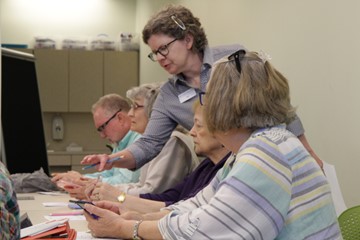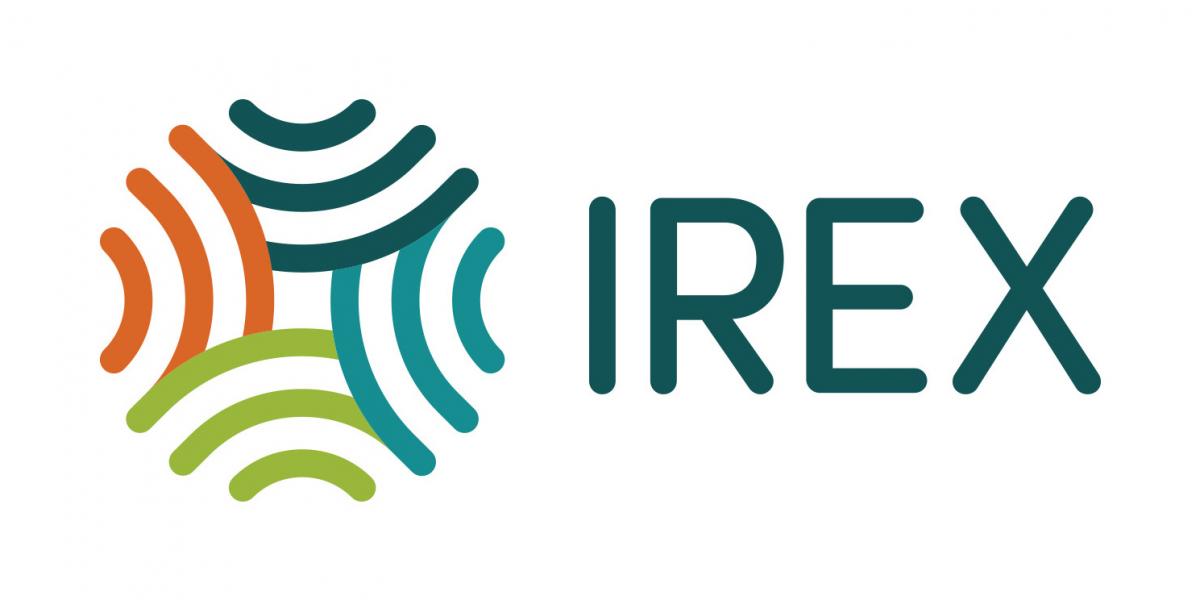Bridgebuilding Case Study: Daniel Boone Regional Library
This case study was developed by IREX as an example of a "bridgebuilding" activity. IREX defines bridgebuilding as engaging across differences in ways that respect identities, foster mutual relationships, seek a common good, and promote a commitment to civic engagement, thereby contributing to increased social capital and strengthened civic infrastructure, and ultimately, a stronger democracy.
Background/context of the library
The Daniel Boone Regional Library (DBRL) seeks to promote access to information, lifelong learning, civic involvement, digital literacy, intellectual and cultural enrichment, community partnerships, and flexibility in addressing changing needs. By providing resources, educational opportunities, and a friendly setting for learning, community development, and personal growth, the library seeks to improve the quality of people's lives.
What bridging initiatives/programs has the library offered?
DBRL employed the Human Library concept which is a learning approach in which human beings are recognized as “living books,” and share their experiences as a representative of a group in the community that is often subject to prejudice, stigmatization, or discrimination. Individuals have the opportunity to “borrow” these human books and engage in conversations with them and through that experience, their beliefs and stereotypes are challenged and they are exposed to other perspectives. Using the Human Library program, DBRL gathers people from various backgrounds to exchange stories and ultimately, fosters communication and understanding and creates a safe environment for open and vulnerable discussions about their life experiences. The Human Library program requires libraries to purchase licenses from the Human Library organization and receive facilitation training.
DBRL also holds a One Read program which aims to connect community members around civil dialogue on difficult issues. As part of this program, the library works with the community to select a book; then they invite the community to read the book over the summer, ahead of programming around the book hosted in September. These programs include author visits, book discussions, film screenings, art exhibits, and other types of programs that explore themes and topics related to the book. For example, the library selected books related to teen mental health and brought a panel of experts and students to talk about the issue in their community. The library also learned more about actions being taken by stakeholders to address teen mental health issues, as well as where there are gaps and what resources are needed to fill those gaps.
In addition to the Human Library and One Read programs, DBRL has several service offerings that contribute to community engagement and bridging, such as helping former inmates find jobs by providing assistance with websites and databases, and with completing job applications.

One of DBRL’s areas of focus is on digital equity and wellness. This work grew out of a grant from IMLS to work with IREX that introduced the Learn to Discern media literacy curriculum into the library. The work expanded and then retooled to go online, largely as a result of the COVID-19 pandemic. As a result, some patrons experienced challenges with digital access, which left them out of programs and exacerbated already unequal conditions. DBRL also observed the need for patrons to have support in maintaining balance and safety in online interactions.
Since the pandemic, the library has provided materials, initiatives, and services aimed at promoting digital well-being and equity, advancing online safety and security, and encouraging responsible and thoughtful technology usage. The library also offers training sessions and courses to help residents develop vital digital skills on topics such as basic computer literacy, internet navigation, online communication, and the use of productivity tools like word processing and spreadsheets. They also hold drop-in sessions and workshops to assist people with accessing and using technology. Library staff assist people with setting up smartphones and answering any questions or requests from members of the public related to technology. Patrons can get support catered to their needs, whether it be setting up a new device, addressing software problems, or learning how to use applications.
Why were bridging initiatives needed in the community?
The library employed the Human Library approach after witnessing the impact of social isolation during the COVID-19 pandemic and the rise of hateful speech and crime towards people of color, especially in response to the Black Lives Matter movement and traumatic experiences related to race that were happening within the community. The Human Library was an effort to close gaps and promote connections, foster empathy, understanding, and dismantle barriers to productive interaction across different racial groups.
What were the signs of success?
The library measured success by the number of people that attended the events, as well as qualitative survey responses that demonstrated that participants were eager and willing to engage in vulnerable conversations. They received positive responses from participants, both from those who were human books and attendees. For example, one of the human books was a homeschooler, and during one event, an attendee said that their stereotypes of homeschooling had been shattered and that their previous assumptions about why someone would choose to homeschool had been incorrect. The attendee also said that they learned how much they have in common with the book. On the other side, books have noted that they felt listened to during events and that it was beneficial to tell their story in a space that felt safe.
What was learned?
When the library first started the Human Library program, it was difficult to reach people and persuade them to participate in difficult conversations. One significant challenge was initial resistance and reluctance of participants to be open and vulnerable, but by fostering a welcoming environment, they were able to facilitate a meaningful dialogue.
Photo credit: Daniel Boone Regional Library
Library details
- Library name: Daniel Boone Regional Library
- City, State: Columbia, MO
- Size of library system: Two-county area with 4 libraries in 4 communities
- Contact for bridging information: Seth Smith, Public Services Librarian, [email protected]
Use this case study to learn:
- how the Human Library program can teach people about different experiences and perspectives.
- about innovative solutions to build empathy and create a welcoming space across different groups.
- ways to engage people who have different viewpoints on a range of topics.
- about technology-related services that you could provide to patrons, especially those looking for jobs.
- about digital wellness programs and activities that assist individuals with digital literacy skills.
Share your story

Does your library have a bridgebuilding example to share? Write your own case study by completing this template and sending it to [email protected].

